Reutlingen is a medium-sized city (population around 110,000) in Baden-Württemberg just to the south of Stuttgart.
Like its close neighbours Tübingen and Esslingen it acts very much as a dormitory community for the larger regional capital, but it does have enough history and sights to make a visit worthwhile.
Most of the sights of Reutlingen are along, or just off, the main axis of the Wilhelmstrasse, which passes through the main Marktplatz square and out to the other side of the main central part of the city.
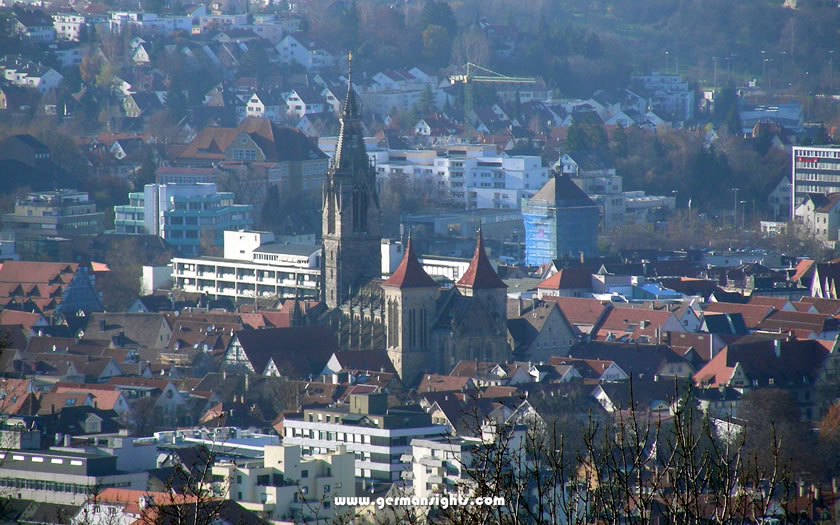
View over Reutlingen in southern Germany
Other interesting attractions can be seen on the outskirts of the historic centre, around what used to be the city walls and towers.
Stuttgart Airport is by far and away the most convenient airport for Reutlingen. There is a regular shuttle service ("eXpresso") from the town to the airport.
Distance to Stuttgart Airport: 27km
Distance to Memmingen Airport: 135km
Distance to Zurich Airport: 203km
Distance to Munich Airport: 224km
Distance to Frankfurt Airport: 227km
Memmingen (now Allgäu Airport) is the next option with its range of low-cost airlines. However the widest choice of flights might well be available from the last three airports - although furthest away, they are some of the busiest in Europe.
Reutlingen is part of the regional train network around Stuttgart. The main railway station is located just outside the centre of the city and is easily reached on foot from the main attractions.
Reutlingen hotel accommodation is built to service the local industry and the town university and, while they aren't going to win any awards for 'Olde Worlde' charm, the city centre establishments provide a professional service at different price points.
If you know when you are planning to go but haven't decided on accommodation, then use the map below to get an idea of which properties are available and to compare prices during the period you wish to travel.
Enter your proposed dates and use the '+' to zoom in on a location and reveal more properties. Click on the price above a property to see more information.
(Please note that this selection will also include some guesthouses, pensions and self-catering apartments for those who are interested in that form of accommodation!)
Alternatively, if you would like a list of properties available on your proposed dates of travel, use the search box below to find accommodation:
One of the original settlements near Reutlingen was on the Achalm, a hill which rises to just over 700 meters in altitude to the east of the city.
Archaeologists have found traces of a Celtic settlement from the 2-3rd century BC in the area, although there are indications of even older habitation within the city walls.
But the settlement which most authorities mark as the first of the town itself took place four or five centuries after the birth of Christ and during the fading power of the Roman Empire.
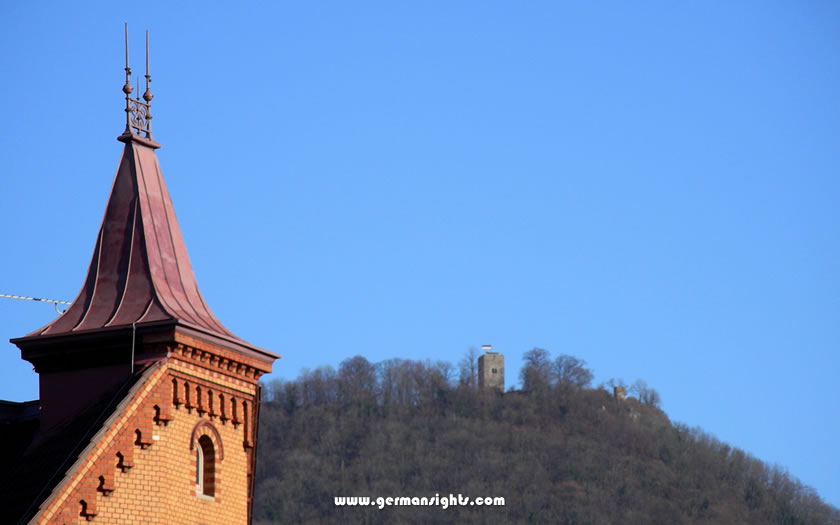
The Achalm fortifications above Reutlingen
The Alemanni tribes inhabited the area - their name remains in the French translation of Germany ("Allemagne") as well as the ending of the towns in the area ("-ingen" is a sign of an Alemannic settlement).
In the 11th century a local count built a fortress on the strongpoint of the Achalm and, in the following centuries, the town below received the right to hold a market and, later, the recognition as a town.
The history of Reutlingen in the Middle Ages is marked by attempts to retain its status as a "free city" with loyalty to the Emperor and attempts by local warlords, especially the county of Württemberg, to bring Reutlingen under their influence. Many of the town's fortifications and important buildings date from this time.
The Marienkirche, for example, was begun in the 13th century in gratitude for deliverance from a siege (and finished in the following century).
Eventually, however, Reutlingen came under the sway, both commercial and political, of Württemberg (even though the official decision was a few centuries away).
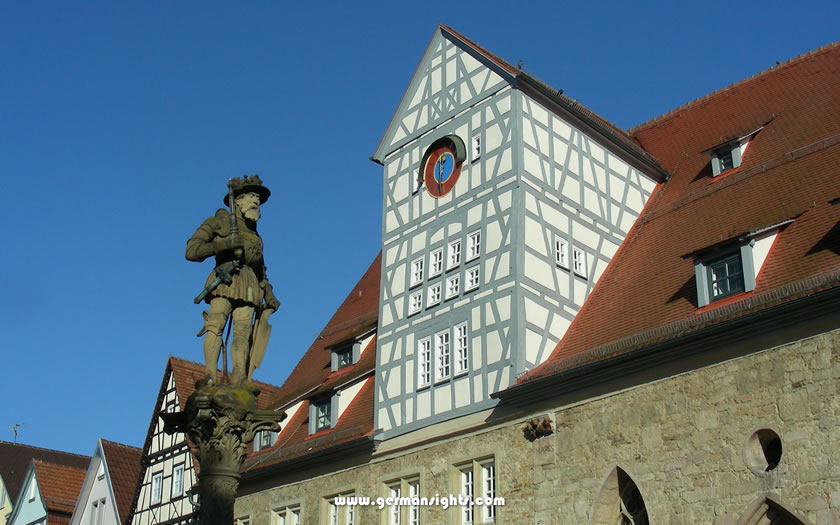
The statue of Emperor Maximilian in front of the Reutlingen town hall
Reutlingen was one of the main centres of support for Luther during the Reformation and until the 19th century, adherence to the Augsburg Confession was obligatory if one wished to become a franchised citizen of Reutlingen (a "Bürger").
The city, like so many of its neighbours, suffered terribly during the 30 Years' War and lost a third of its population to disease and war.
The fire of 1726 destroyed many of the public buildings and townhouses during the three days that it burned and, although Reutlingen wearily rebuilt itself, it finally lost its official independence during the Napoleonic wars and became part of the Kingdom of Württemberg in 1802.
The town received a boost in the 19th century with the completion of a rail line and profited from light industry and the consequent influx of workers and inhabitants.
Reutlingen was badly damaged by air attacks at the end of World War II and lost 25% of its accommodation. The area was occupied by French troops and rebuilt under local commanders of the wartime resistance, one of whom (Oskar Kalbfell) was town mayor from 1945 to 1973.
Reutlingen reached the mark of 100,000 inhabitants in 1988 and has continued to grown since that time. It is the ninth largest city in Baden-Württemberg.
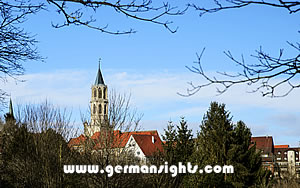
Rottweil is characterised by its medieval architecture and is renowned for being one of the oldest towns in the region. The city is noted for its centuries-old annual carnival tradition, Fasnet. It's also widely recognized for giving its name to the well-known breed, the Rottweiler dog.
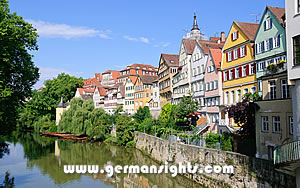
Tübingen dates back to the Middle Ages and is distinguished by its well-preserved old town featuring half-timbered houses and cobbled streets. Tübingen is also home to one of Europe's oldest universities, the Eberhard Karls University, established in 1477.
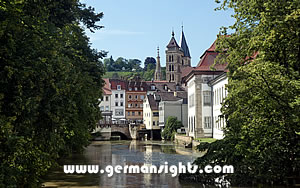
Esslingen is famous for its well-preserved medieval old town. The town is characterised by its half-timbered houses, majestic towers and the impressive Esslingen Castle. Once an influential imperial city in the Middle Ages, it is now known for its automotive and engineering industries.
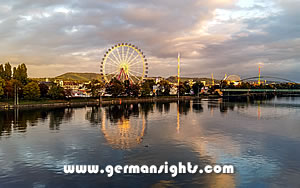
Stuttgart is a dynamic and diverse city in the heart of Baden-Württemberg. Founded in the 10th century, Stuttgart has transformed itself from a historic city into an automotive powerhouse, famously home to world-renowned car manufacturers such as Mercedes-Benz and Porsche.
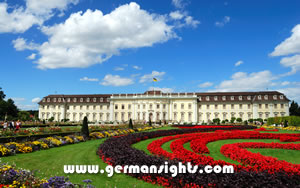
Founded in the early 18th century, Ludwigsburg is known for the Ludwigsburg Palace, one of the largest Baroque palaces in Germany surrounded by expansive, beautiful gardens. This city is also home to the Ludwigsburg Festival, a well-known international festival of music and performing arts.
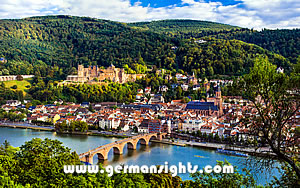
Heidelberg is home to Germany's oldest university, Ruprecht Karl University, founded in 1386. The city is synonymous with the iconic Heidelberg Castle, a mix of styles from Gothic to Renaissance, perched on a hill and overlooking the city and river below.
The Reutlingen Tourist Office is located in the central Marktplatz ('Market Square'). It is open Mon-Sat year round and daily guided
tours of the town are offered in German in the summertime.
Website: tourismus-reutlingen.de